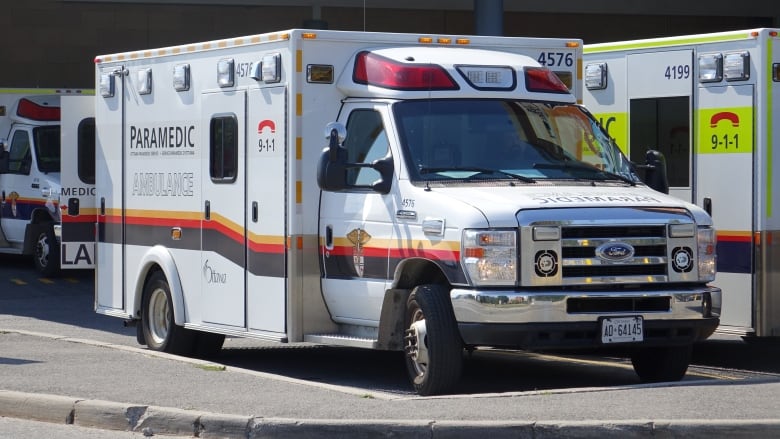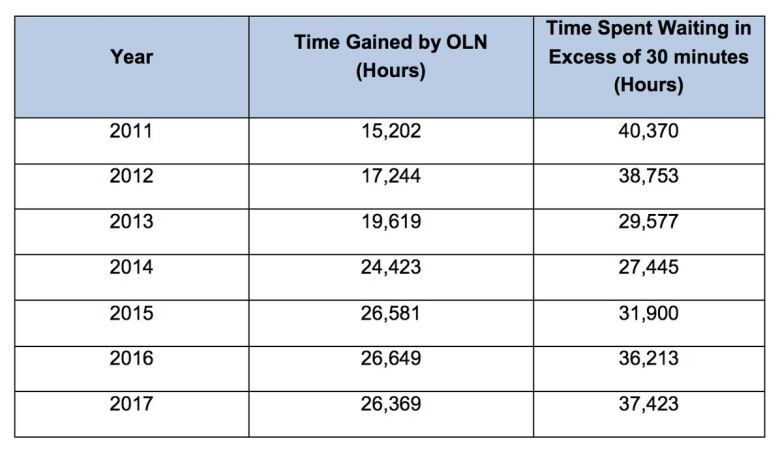Long hospital drop offs an 'Achilles heel' for Ottawa paramedics
Number of 'level zeros' has risen even as response times improve

Ottawa had no ambulances availableto respond to emergencies 322 times in 2017, 66 more times than the year before.
When it happens, theparamedic service calls it a "level zero."
For the first time in three years, the paramedic service met its standard for emergency response times in life-threatening situations. Butthe ever-increasing number of calls to 911 and long wait timesto offload patients at hospitals are making level zeros an ongoing problem.
The city's emergency services manager, Anthony Di Monte, vented hisfrustrationabout the impact understaffed emergency rooms are having on Ottawaparamedicsat a community and protective services committee meeting Thursday.
"We're doing all the right things, but this is the Achilles heel that continues to remain in the system that's out of our control," Di Monte said.
Hospital emergency rooms a 'disaster'
Ottawa paramedics spent 37,423 hours in emergency rooms waiting to offload their patients in 2017. That's the equivalent of 1,559 daysin a singe year.
Paramedics often feel anxious and held hostage as they wait for hospitals to accept their patients, he said. It also leaves themunavailable to respondto new emergencies, which could be contributing to the level zero problem.

If he were the boss at Ottawa'shospitals, the peoplemanagingemergency rooms wouldbe firedfor handling ambulances so poorly, he said.
The province put $1.5 million toward a pilot projectallowingparamedics to hand patients over to a designated nurse, which gets themback on the road and responding to more emergencies. Thepilot project has been running for several years, but it's not a permanent fix, Di Monte said.
Even though it has saved paramedics thousands of hours in emergency rooms, the number of hours they spend there has continued to rise since 2014.
Ottawa has also hired 36 new paramedics in the last two years to keep up with the growth and improve response times.
17 ambulances waiting at once
At one point in the last few months, the city had as many as 17 ambulances waiting in hospital emergency rooms, said Coun. George Darouze.
"They shouldn't be there," he said.

The worst offenderis the Ottawa Hospital's Civic campus, according to city staff. They'vebeen talkingabout it with hospitalofficials, who havepromised to put an end to offload delays.
Di Monte hopes that comestrue.
"We've resolved our issues," he said. "Now it's time for them to act and to resolve this fundamental issue."
In a statement, Dr. Guy Hebert, head of emergency medicine at the Ottawa Hospital, said urgent patients are seen right away, but demand is also high.
"The Civic Campus emergency department is the trauma centre for eastern Ontario, and has seen a steady increase over the last five years in the volume of patients seeking care. This pressure leads to higher ambulance offload times," he said.
Roughly 50 to 60 patients arrive at the Civic Campus via ambluance each day, Hebert said, approximately one-quarter of the total daily number of patients who seek care at the trauma centre.












_(720p).jpg)


 OFFICIAL HD MUSIC VIDEO.jpg)
.jpg)



























































































